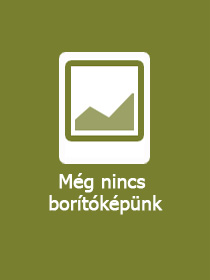
| ISBN13: | 9781032775975 |
| ISBN10: | 1032775971 |
| Kötéstípus: | Puhakötés |
| Terjedelem: | 274 oldal |
| Méret: | 229x152 mm |
| Súly: | 508 g |
| Nyelv: | angol |
| Illusztrációk: | 66 Illustrations, black & white; 65 Halftones, black & white; 1 Line drawings, black & white |
| 700 |
Architecture and Social Change
GBP 35.99
Kattintson ide a feliratkozáshoz
A Prosperónál jelenleg nincsen raktáron.
Architecture and Social Change is a timely, and urgently needed, survey of social and environmental justice advocacy in architecture.
Architecture and Social Change is a timely, and urgently needed, survey of social and environmental justice advocacy in architecture. Spotlighting contemporary design and research practitioners who are creatively leveraging their expertise for social change, this book features interviews with fifteen influential design leaders who are at the forefront of their profession?s efforts to confront pressing challenges like housing insecurity, racial and economic inequality, environmental degradation, and architectural waste. Among the interviewees are Dana Cuff, who, as director of cityLAB, is helping to reshape housing policy in California; Joana Dabaj, cofounder of the design charity CatalyticAction, which empowers refugee children from the Syrian civil war to act as ?co-designers? of playgrounds and public spaces in Lebanon; and Ivi Diamantopoulou and Jaffer Kolb of New York City?based New Affiliates, who repurpose, through lively recontextualization, the architectural byproducts of their city?s museum exhibitions and building-performance mockups. These insightful student-led interviews compellingly capture the current moment of soul-searching in both the profession and the academy.
An indispensable guide for design students and professionals alike, Architecture and Social Change gathers inspirational stories alongside practical advice for how to navigate a career in architecture while seeking to make a positive impact.
Introduction Part I. Taking the Initiative 1. Rethinking Standard Practices 2. Finding Opportunity in Excess 3. Prototyping Speculative Infrastructures 4. Making Something Out of Nothing 5. Radical Resourcefulness Part II. Empowering Communities 6. Industry, Infrastructure, and the Public Interest 7. Debating Community Design Through Gameplay 8. Prioritizing Design in Disadvantaged Communities 9. Participatory Design to Foster Inclusive Communities 10. Advocating for Other Species Part III. Practicing with Purpose 11. Architecture as an Act of Engagement 12. Care as a Core Value in Architecture 13. Democratizing the Built Environment 14. Building a Citizenship Culture 15. Converting Convictions into Practice




